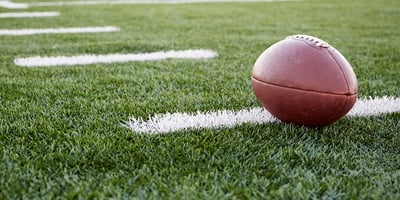 From youth leagues and high school to college and professional play, football reigns supreme in the United States. Every weekend during the fall, millions of Americans flock to stadiums and gather in front of television screens to root for their favorite teams and players. And February 11 will be Super Bowl Sunday. Whether you’re a dedicated fan or just in it for the food, here are five fun facts to enrich your football viewing experience:
From youth leagues and high school to college and professional play, football reigns supreme in the United States. Every weekend during the fall, millions of Americans flock to stadiums and gather in front of television screens to root for their favorite teams and players. And February 11 will be Super Bowl Sunday. Whether you’re a dedicated fan or just in it for the food, here are five fun facts to enrich your football viewing experience:
The first American football game was played in 1869
Although it was played even earlier in communities around the country, American football traces its official origin back to Nov. 6, 1869. That’s when the first-ever organized college football game was played between Rutgers University and the College of New Jersey (now known as Princeton University). However, this game more closely resembled soccer rather than modern football. And over the next decade or so, college teams grew to prefer a style of play heavily influenced by rugby.
Walter Camp was the “Father of American Football”
Walter Camp was an influential football player and coach for Yale University — so influential he became known as the “Father of American Football.” Thanks to his advocacy in rulemaking committees in the 1870s and 1880s, teams and clubs adapted many rules that clearly differentiated American football from rugby and soccer, putting the game on the path to its current form. Key elements of modern football Camp devised include clearly defined possessions based on downs, the line of scrimmage and center snaps, 11-man teams, and offensive positions like quarterback and halfback.
Footballs used to look very different
In the early days of American football, the game was played with a round ball (like soccer) or an oval ball (like rugby). These shapes matched up with football’s primary emphasis on kicking and running. However, once the forward pass was introduced in the early 20th century, ball design began to change. Footballs became narrower and more tapered at the ends so they’d be easier to throw and catch. This new shape, known as a “prolate spheroid,” also made the ball easier for offensive players to carry after completing a catch or receiving a handoff.
The ball isn’t really made of pig skin
In football, you’ll sometimes hear the game ball referred to as a “pigskin.” However, they’re not actually made of that material, and likely never were. In the very early and unofficial days of the game, some balls may have been made from an inflated pig’s bladder. By the 1860s, though, most teams were playing with a ball that consisted of a leather cover and a rubber bladder. Today, professional and college footballs are covered in cowhide with a synthetic rubber bladder.
Football is America’s most popular sport
Football is America’s most popular sport — and has been for a long time. As of 2017, Gallup polling indicated = 37% of U.S. adults listed football as their favorite sport to watch, far ahead of basketball at 11% and baseball at 9%. In 2019, Gallup found = 62% of Americans consider themselves professional football fans (ranking first in the poll), while 54% call themselves college football fans (ranking third). As you’d expect with these numbers, football is America’s leading sport in terms of television viewership and in-person game attendance.
These intriguing facts offer just a glimpse of what you can find out when you delve into the lore of American football. Learning about the game’s history and cultural impact is a great way to make each game you watch a little more meaningful.
The content on this site is intended for informational purposes only and should not be considered accounting, legal, tax, or financial advice. First Federal Bank recommends that customers conduct their own research and consult with professional legal and financial advisors before making any financial decisions. Links to third-party websites may be provided for your convenience; however, First Federal Bank does not guarantee the reliability, accuracy, or safety of the information, products, or services offered on these external sites. We are not liable for any damages resulting from the use of these links, and we do not investigate, verify, or endorse the content or opinions expressed on any third-party sites. NMLS # 408902.